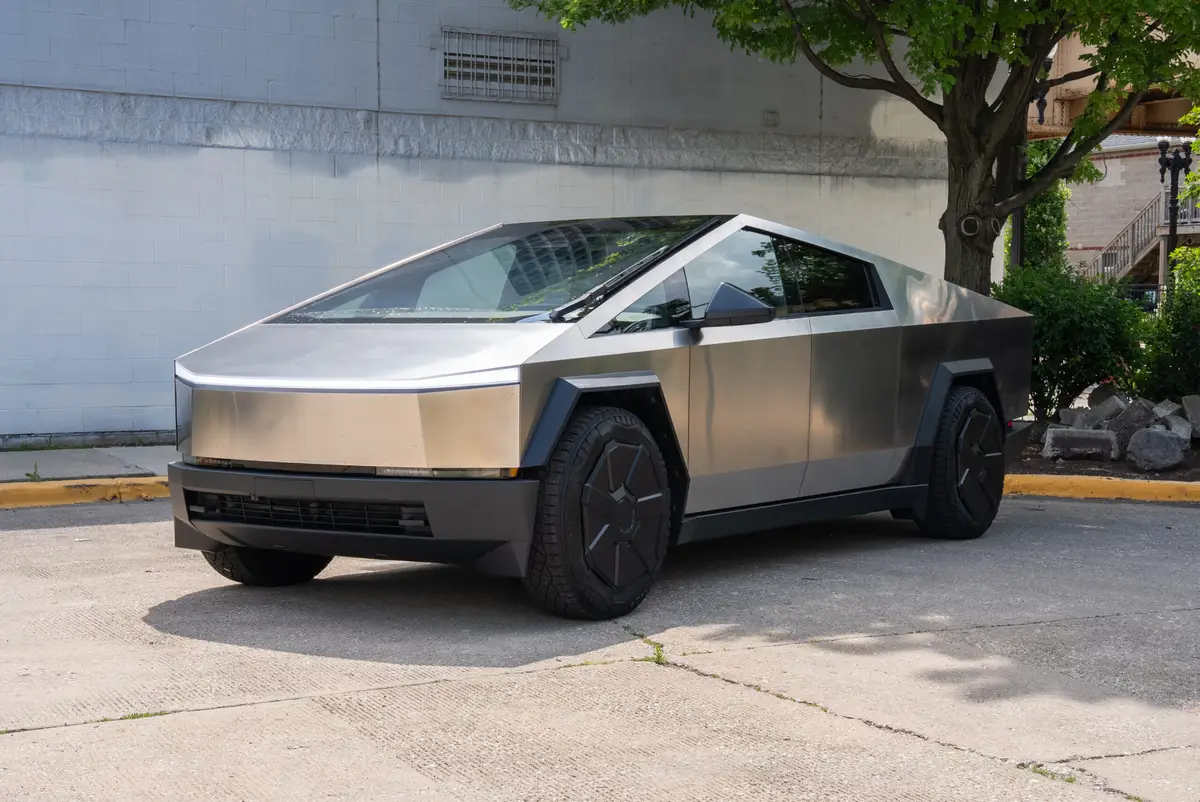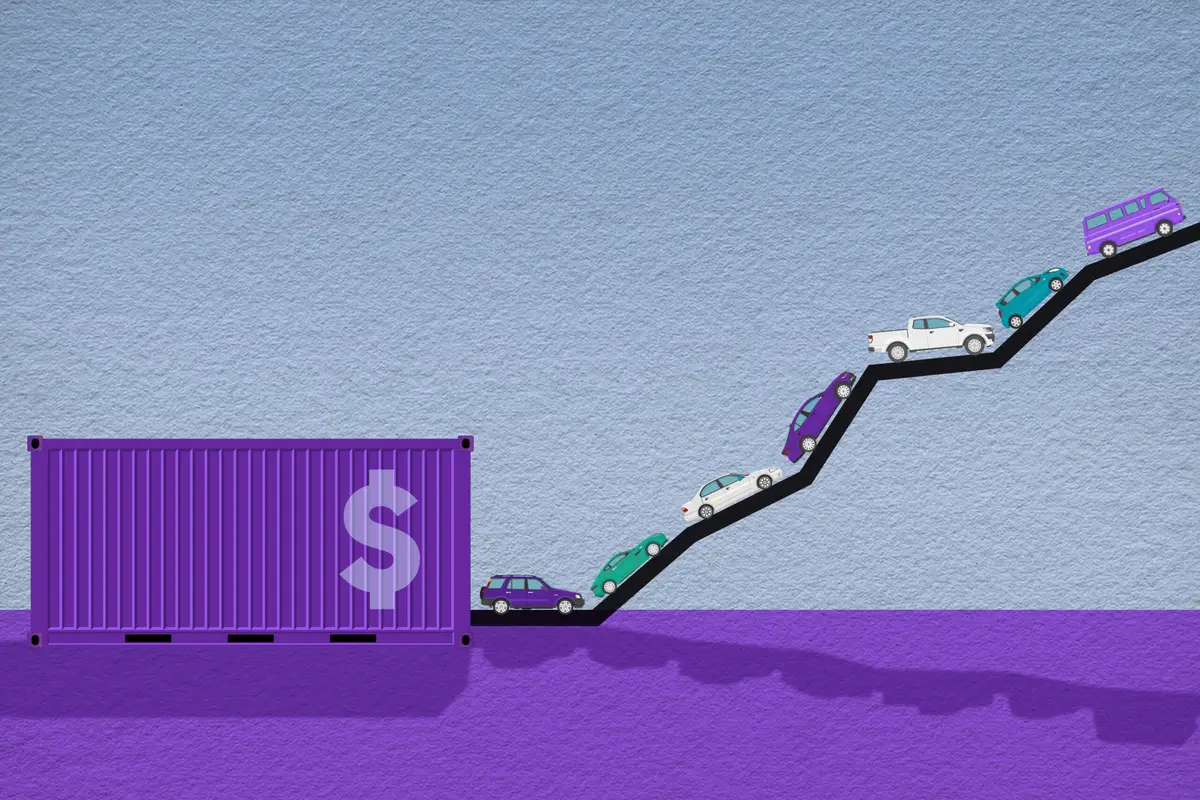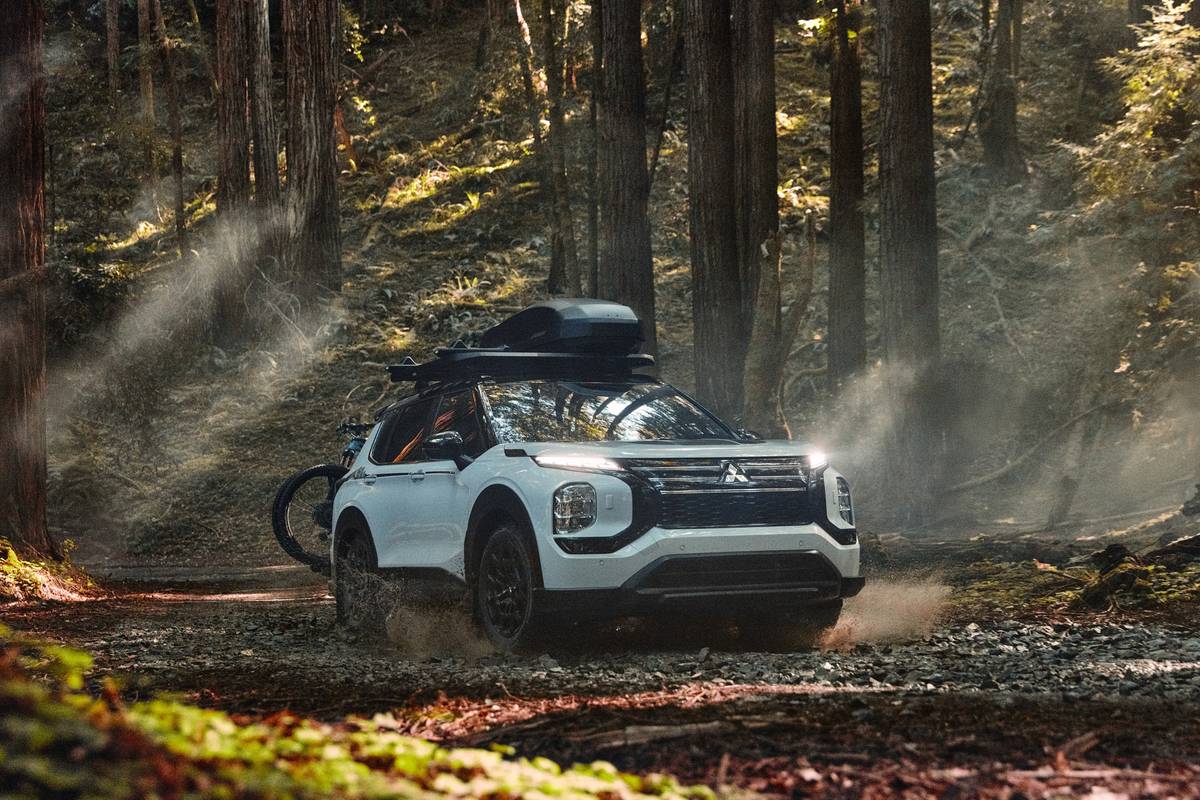chicagotribune.com's view
Welcome Generation V Maxima from Nissan–or maybe you call it Renault East.
How many times have you heard “It’s not for everyone?”
That expression aptly describes the 1999 Land Rover Discovery II.
What sets it apart from the rest of the sport-utility vehicle pack and the pack of SUV buyers, is that when its rivals are coming up with sport-utes that ride and handle like cars, Discovery II is one of those old-fashioned machines that rides and handles like a truck.
Yet Discovery II is none the worse for it.
Watch as a vehicle slightly larger than a Ford Explorer climbs rain-soaked boulders at a 38-degree angle without wavering.
Then watch as it dips down a muddy embankment and glides through a 20-inch deep stream of water without hiccupping or, worse, stalling.
Most SUVs are designed to take you to work and back or to the vacation resort and back, even if the roads are covered with snow because they offer four- or all-wheel-drive.
The Discovery is designed to take you to work and back or to the resort and back even if there are no roads leading to the office or chalet.
And that is why it isn’t designed for everyone, especially those who lean toward the tres chic in the clothes they wear and the vehicles they drive.
Discovery is basically a big box on wheels with a very high roof line and massive windows all around. A love/hate design.
And you must accept that Discovery II isn’t a billowy cushioned 4WD limo. When you hit the flaw in the road, rather than cushion the blow, the springs and shocks “snap” over it and send more than a quiver back to the seat of your britches.
While Discovery II sits high, you don’t feel wobbly at speed or in corners, as you might think you would, thanks to Active Cornering Enhancement, or ACE, which uses sensors to anticipate roll or lean in a corner and raise or lower the body as needed to minimize movement and keep you sitting upright.
Still, you do feel the weight–almost 5,000 pounds. You won’t find D II in the petite section of the showroom. There’s heaviness in the wheel, which takes an effort to move. After hours on a twisty course, your arms will feel as if they’re attached to barbells.
Discovery II is powered by a 4-liter, 188-horsepower V-8 with 4-speed automatic. The 4-liter does a most adequate job of moving the mass, though with a 13 m.p.g. city/15 m.p.g. highway rating, you suspect the V-8 was holding onto barbells, too.
Discovery II means there was a Discovery I, which debuted as a 1995 model. At the time, Land Rover also sold a crude two-door machine called Defender, though it should have been called “beast.” When testing Defender, it took 150 miles before the heater went to work. Defender also made more noise than a Veg-o-matic.
By comparison, Discovery I was a civilized four-door beauty that helped turn around Land Rover’s fortunes in the U.S.
With Defender and t he larger and more costly Range Rover, Land Rover was selling about 5,000 units in the U.S. When Discovery arrived–and Defender departed, because Land Rover chose not to waste money adding dual air bags–sales rose to 12,000 units the first year and kept rising until reaching 22,000 last year.
“Discovery brought people in,” said Larry Knight, regional operations manager for Land Rover in Naperville.
The redesigned D II we tested arrived in showrooms in January to replace the D I. Based on a 71 percent increase in first-quarter sales, it is bringing in even more folks than D I did.
Discovery II is 6 inches longer and 3.5 inches wider than D I. While it looks much like D I, Land Rover insists there are 13,500 new parts. A lot to count; we’ll take their word.
The Series II is built for on- and off-road enjoyment. The added length, wider track and wider tires give it more stability, though give a lot of credit to ACE.
Standard equipment includes ele ctronic traction control to prevent slippage on wet or snowy roads as well as hill-descent control that regulates gearing on steep grades. It also has full-time four-wheel-drive and anti-lock brakes as standard.
Discovery II starts at $34,150.
Changes and improvements for ’99 include a higher windshield so those taller than 6 feet can see the stop lights that were blocked from view in the D I; a bigger cargo area to hold more gear; larger headlamps for better visibility; 10-way power seats with controls in the center armrest, though after position 6 you tend to lose interest; and a spare tire sitting lower on the rear door to improve sight lines in back.
Also, cleverly placed pockets in the roof in back, as well as over the visors upfront, provide added stowage, while a small pullout drawer in the dash gives you a place for keys or toll change.
The D I featured a pair of side-facing third-row jump seats that pulled down from the sidewalls. D II features a pair of forward-facing third row seats in back that, with a twist of the handle, flip and fold out of the side walls.
Discovery II also features electronic brake distribution in which sensors detect heavier loads in back or whether you are towing a trailer to apply more force to the rear brakes for better stopping distance under load; and self-leveling suspension with rear air springs that allow you to raise the rear end 1 1/2 inches when off-roading or lower it 3 inches when attaching a trailer.
And while front and rear quarter panels, hood and rear door are aluminum, the doors are steel.
But there are some gripes. The spare tire was lowered on the rear door to provide better visibility out back, yet the trio of head rests on the second row of seats stand at least 6 inches higher than the spare tire and block the view.
Oddly, when you fold down the armrest on the center seat in the second row, you not only expose a pair of flip out cupholders, you also lower the headrest attached to the armrest, which opens up a line of sight out the back window. A lot of technological innovation to see what’s behind you.
The rear seat offers abundant arm room and massive head room with a roof line that tickles the clouds. And leg room in back is OK thanks to a little design trickery. The bottom of the front seat curves upward so your feet can better slide underneath. But knee room is a bit tight. And the door opening to get into and out of the back seat is minimal. The narrow opening forces you to rub against the wheel well getting in or out.
Options include leather seats $1,950; a cold-weather package with heated front and rear windows as well as seats at $500; a performance package with ACE and 18-inch wheels and tires at $2,900; third-row foldaway seats at $1,750, which includes self-leveling suspension ($750 if purchased alone, in which case the foldaway seats are replaced by two massive storage bins in the rear sidewalls); and a hydraulic rear step that slips out to aid loading the cargo hold; front/rear sunroofs run $1,500; rear-seat air conditioning $750; and CD player $625.
Land Rover was purchased by BMW in 1994. BMW will bring out a new $50,000 sport-activity vehicle this year called the X5. So will Land Rover adopt a version? No plans for one, Land Rover folks say, since the British automaker is simply happy to take advantage of BMW’s financial and engineering resources while it focuses on the next entry in the lineup, the Freelander now sold in Europe. It will be unveiled in the U.S. at the Detroit Auto Show in January before going on sale in the U.S. late next year as a 2001 model.
Freelander will be a new entry-level Land Rover slightly larger than a Honda CR-V. The four-door hatchback will be powered by a 2.5-liter V-6 with a 5-speed automatic.
Freelander should start at less than $30,000 in the U.S. versus $34,150 for the Discovery II and $58,000 for the Range Rover. Land Rov er anticip ates sales of about 15,000 Freelanders, 22,000 Discovery IIs and 7,000 Ranger Rovers annually.
“Freelander will put us in the entry-level market that we want to tap,” Knight said, “people who will be Discovery and Ranger Rover buyers some day, who either can’t afford or think they can’t afford a Land Rover now.”
Charged up
Dodge reportedly will market a high-performance version of the compact Stratus sedan for 2000 with dual exhausts, an airfoil wing on the deck lid, flared fenders and enlarged taillamps. Stratus now comes with a 2.5-liter, 168-h.p. V-6 but this high-output version may add a 3.2-liter, 225-h.p. V-6. The thinking is that Dodge may be setting the stage for the addition of a high-performance Charger for 2001, when the Stratus line undergoes a design change. A concept Charger on the auto-show circuit this year met with rave reviews. The Plymouth Breeze reportedly will be dropped to make room for the Charger on the production line.
>> 1999 Land Rover Discovery II
© 1999 Chicago Tribune Wheelbase: 100 inches Length: 185 inches Engine: 4-liter, 188-h.p. V-8 Transmission: 4-speed automatic Fuel economy: 13 m.p.g. city/15 m.p.g. highway Base price: $34,150 Price as tested: $41,375. Includes $1,750 for third-row seats plus self-leveling suspension and rear hydraulic step; $2,900 for performance package with ACE and 18-inch radials; $1,950 for leather seats; and $625 for CD player. Add $625 for freight. Pluses: On- or off-road enjoyment. Tech goodies such as traction, cornering, hill descent and brake distribution control. Neat fold away third row seats. Minuses: Too narrow rear-seat entry. Limited rear-seat knee room. Giant, sight-robbing head rests. Fuel economy.
>>
Latest news

2025 Tesla Cybertruck Review: Wedge Issues


